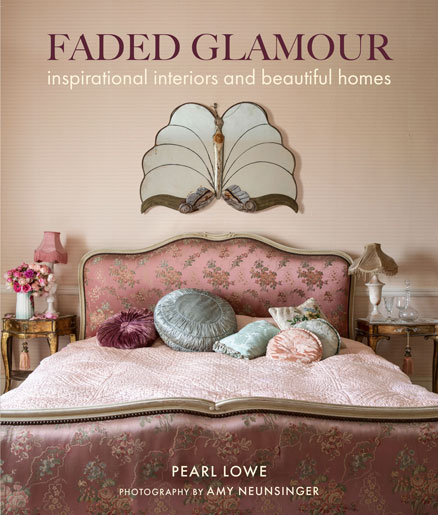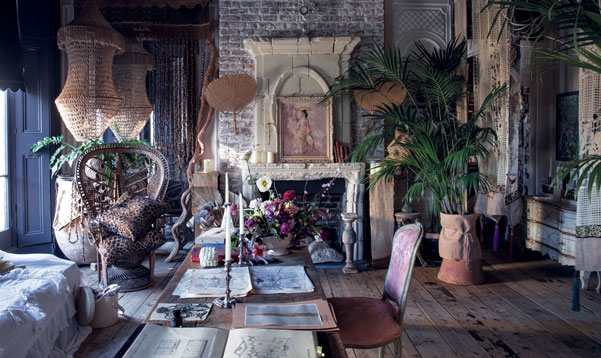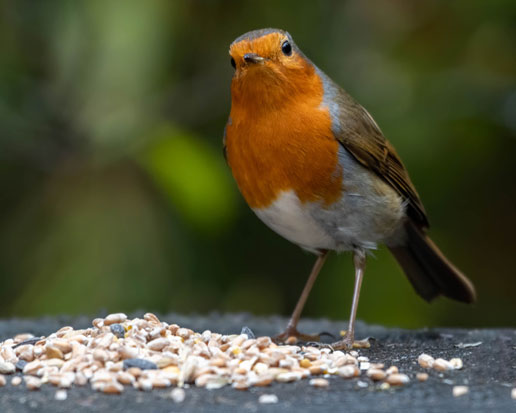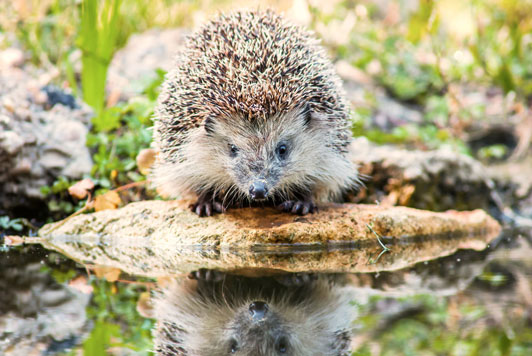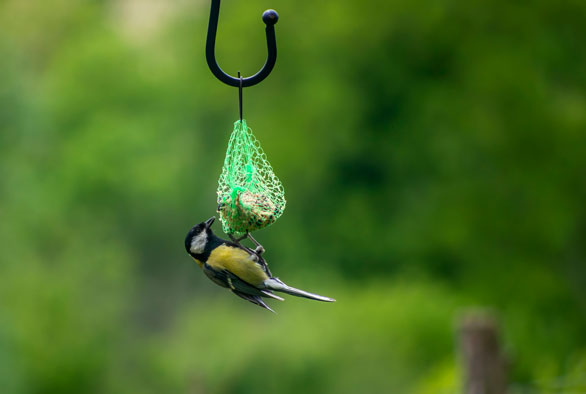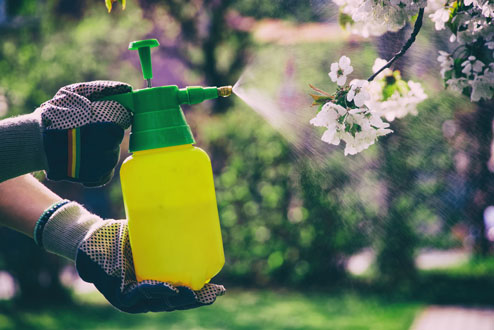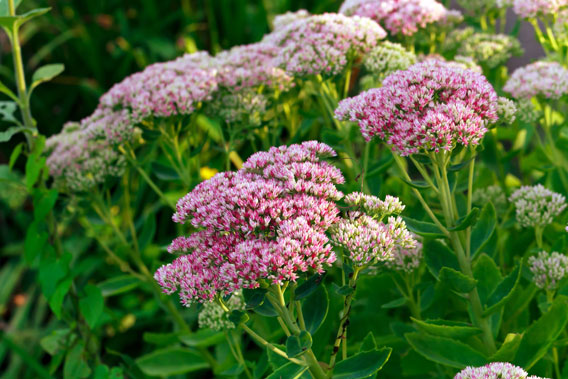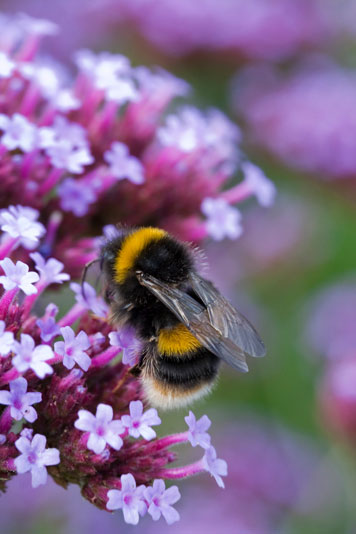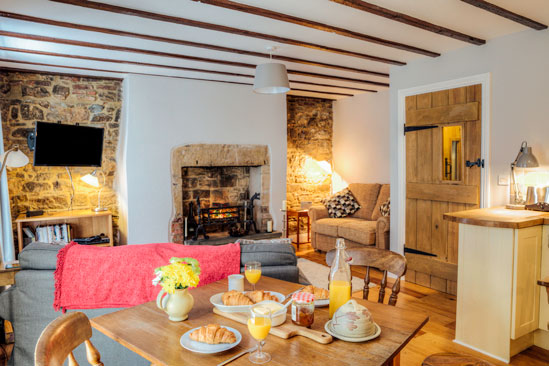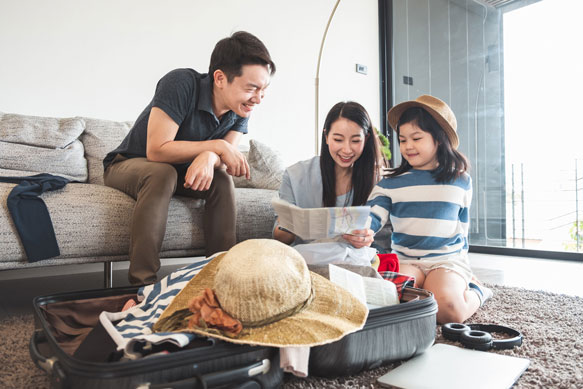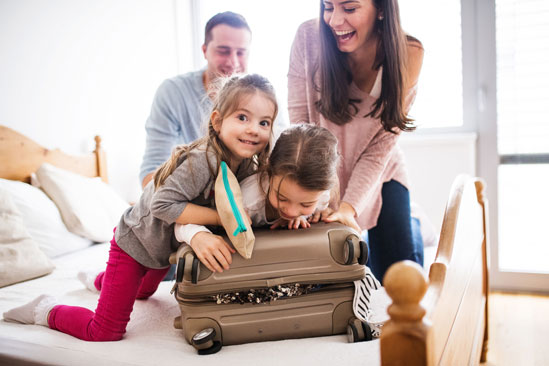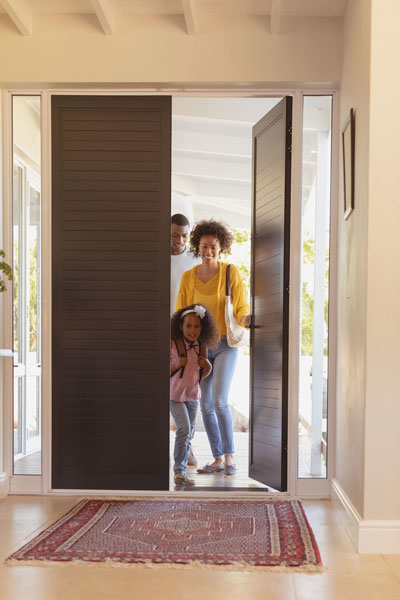It's all about 'faded glamour' for Pearl Lowe and her designer friends. Gabrielle Fagan finds out how to get the look.
Singer-turned-fashion designer Pearl Lowe is renowned for her quirky, individual style – so it’s probably no surprise that she defiantly dances to her own tune when it comes to her decor choices too.
Her home – a rambling 11-bedroom Georgian mansion in Somerset – showcases her trademark blend of grand, romantic chic and cool rock ‘n roll.
“Many people might regard my style as quite ‘eclectic’,” observes London-born Lowe. “That’s fine by me, because I don’t believe there should be any rules – unless you want your house to be a hotel,” the 49-year-old declares with a smile.
She sums up her interior style as “faded glamour” – and this is also the title of her new book, which celebrates her approach to decor and creating spaces she loves.
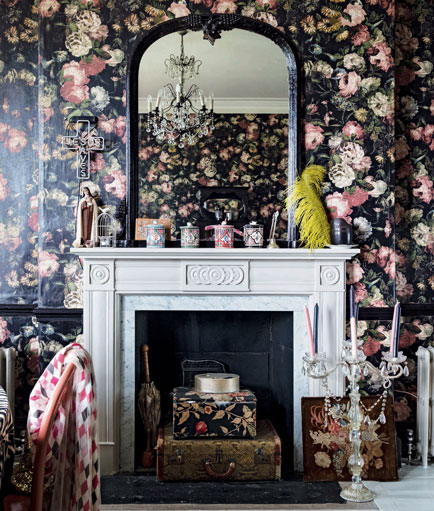
Faded Glamour gives us a glimpse into not only Lowe’s own home, but also the private spaces of her super-creative designer friends, including Solange Azagury-Partridge, Alice Temperley and Sera Hersham Loftus.
There are colourful living rooms, intimate bedrooms, and plush bathrooms which showcase the many different ways ‘faded glamour’ can be interpreted – from urban to rustic, and bohemian to vintage.
“I’d say it’s a gloriously decadent yet well-lived-in decorating style. I think of rooms that are elegant yet whimsical at the same time,” muses Lowe.
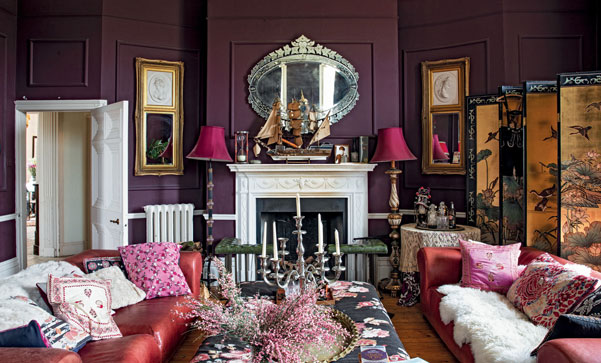
She shares her own home with her musician husband, Danny Goffey (of the Nineties band Supergrass), and their children Alfie, 23, Frankie 20, and Betty, 15. Her daughter, model Daisy, 31, is a regular visitor too.
Throughout the property, Lowe has managed to deftly mix precious pieces of antique furniture with contemporary colourful pieces from flea markets, which happily sit alongside 18th century mahogany wood and 1950s plastic retro.
Wear-and-tear and the patina of age aren’t hidden. Instead, they’re revered and deliberately embraced.
“To me, an object that was once the height of elegance but is now a bit battered has far more allure than something brand new,” says Lowe.
“What I enjoy is the mix, the alchemy you create when you play around with styles… where chintz sits alongside animal print and sultry velvets; rococo suddenly goes a little rock ‘n roll, and a freestanding 1970s Anglepoise lamp sets it all alight.”
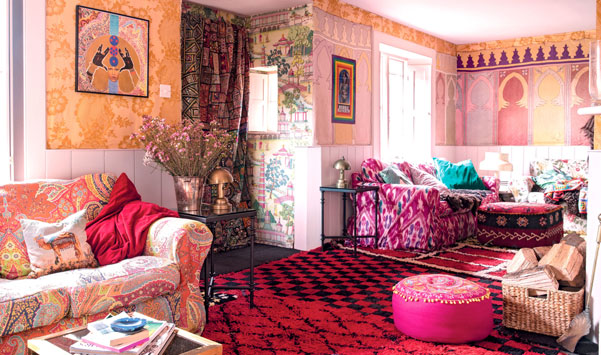
As a designer, she draws inspiration from many quarters: art, film, photography, music, travel and – above all – her friends, especially Rachel Ashwell, the designer and writer who introduced us all to ‘shabby chic’ back in the Nineties.
Ashwell, says Lowe, “taught me how to create spaces that are not just decadent and stylish, but deliciously inviting and alluringly comfortable”.
Here, we take a sneak peek at some of the homes bringing ‘faded glamour’ to life…
Colourful Faded Glamour: Solange Azagury-Partridge
This interior literally “sets your spirit soaring”, enthuses Lowe. This is a home where sofas and chairs are covered in a giddy array of colourful fabrics and throws, and who’s style takes influences from the East.
It’s a harmony of surprising contrasts – a sofa in a Sanderson flowery chintz sits alongside one dressed in an Ikat print, while yellow velvet clashes with shocking pink toile de Jouy wallpaper, and mismatched Moroccan rugs form a rainbow patchwork across the floors.
Fabric used for walls adds to a sense of warmth as well as enriching the palette of shades, while the woodwork is painted baby pink.
“Solange’s bold use of colour is full of wit and wonder and brings a smile to your face,” says Lowe.
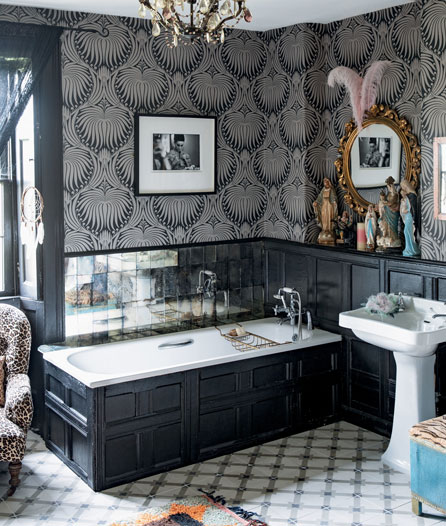
Jewels for the home
Chic Faded Glamour: Alice Temperley
Award-winning fashion designer Temperley, who dresses some of the most stylish women in the world – from the Duchess of Cambridge to Beyonce – playfully mixes old with new in her home, a Regency mansion.
Giant disco balls hang from original plaster roses on the ceiling, and black-and-white photographs and contemporary art line the walls of wood-panelled reception rooms.
A mix of intriguing finds from local flea markets – twinkling candelabras, vintage glassware, bespoke china and stacks of rare books – are just some of the treasures that embellish the space and enhance character and interest.
“What I love about this house is that despite the grandeur of the building itself – which in other hands could look austere and formal – Alice has, with her inherent romantic aesthetic, created a whimsical, enchanted world here,” Lower says admiringly.
Fashion a glamorous home
Bohemian Faded Glamour: Sera Hersham-Loftus
Fashion and interior designer Hersham-Loftus has banished walls from her London apartment, and transformed it into a giant living space simply divided into areas by beautiful panels of fabric.
Hand-made muslin curtains – appliqued with vintage lace and hand-dyed – hang over windows, and ceilings are painted black. She’s furnished with day-beds, antique furniture and a jungle of vast potted plants throughout, which conceal subtle lighting effects.
The designer’s style, says Lowe, is ever evolving, and “sumptuous, seductive, exotic, and highly unique”.
Go natural
Faded Glamour: Inspirational Interiors And Beautiful Homes, photography by Amy Neunsinger, is published by CICO Books, priced £19.99. Available now.
